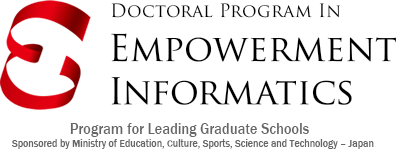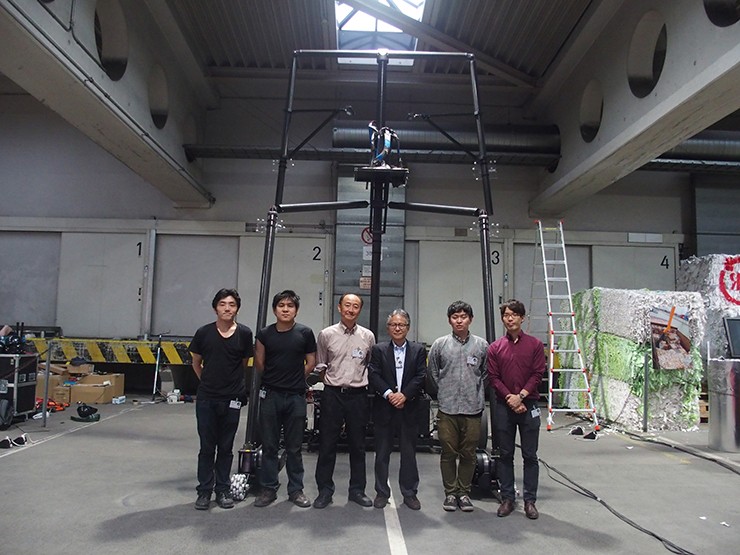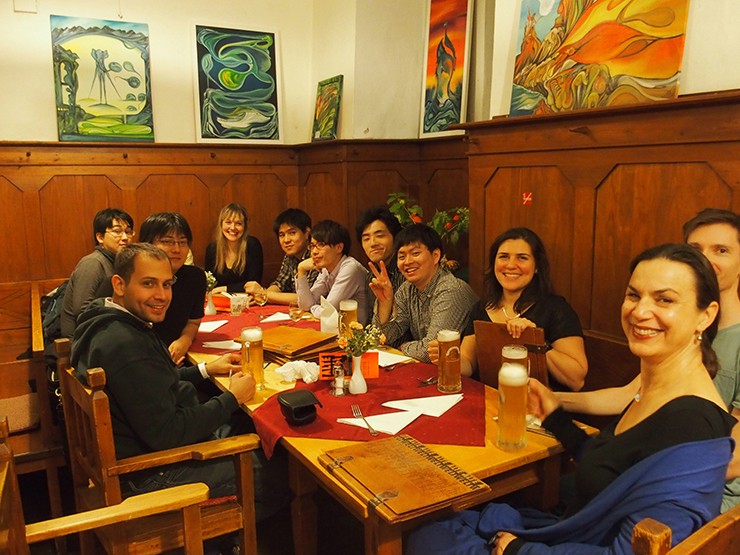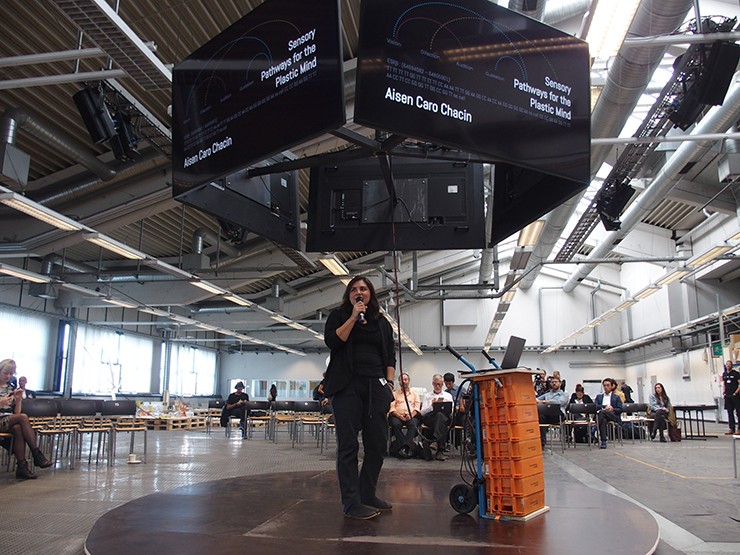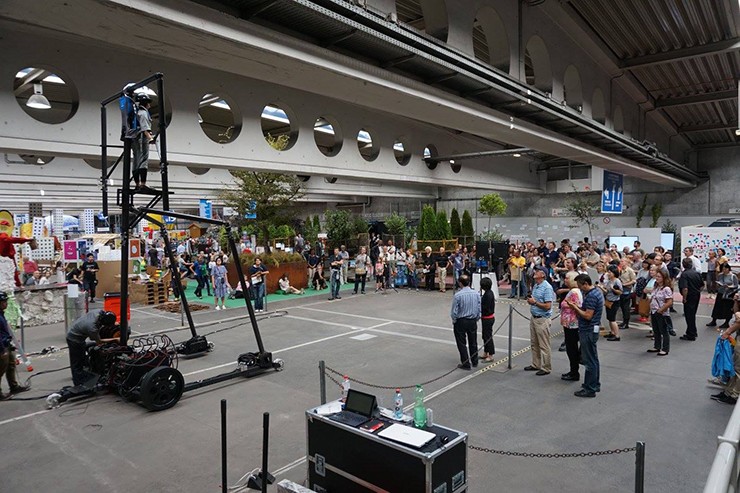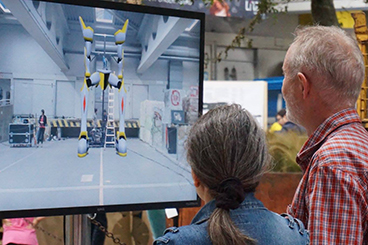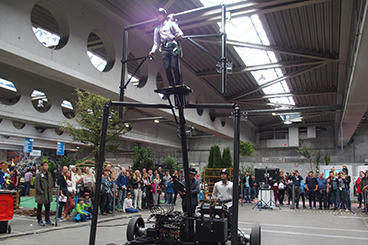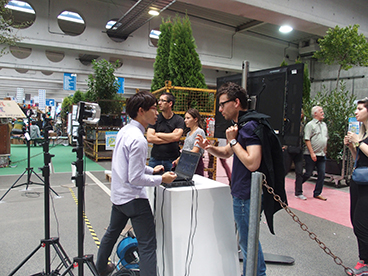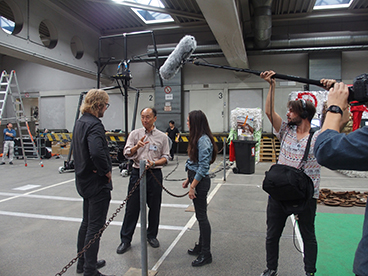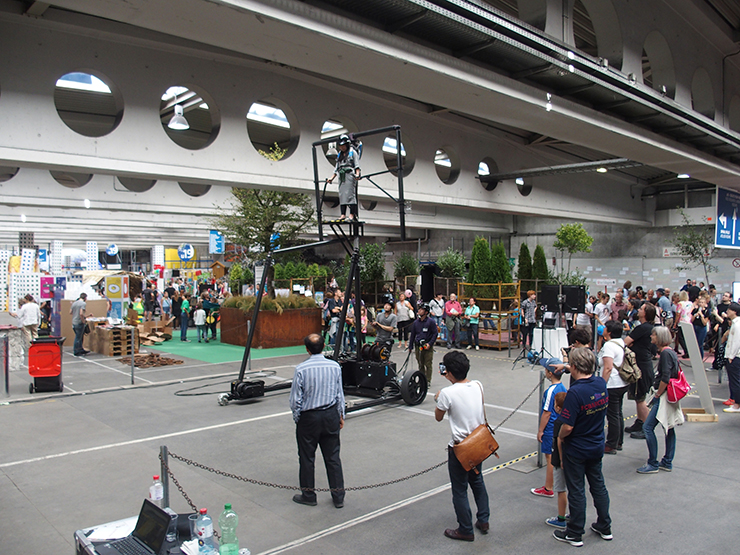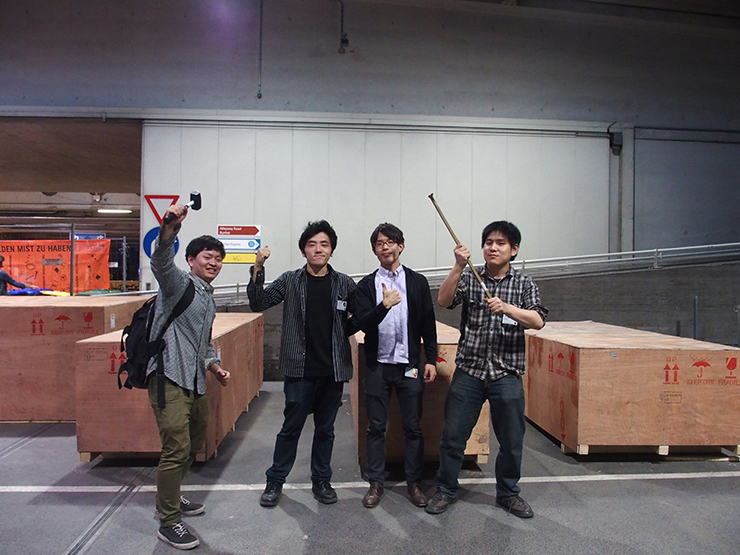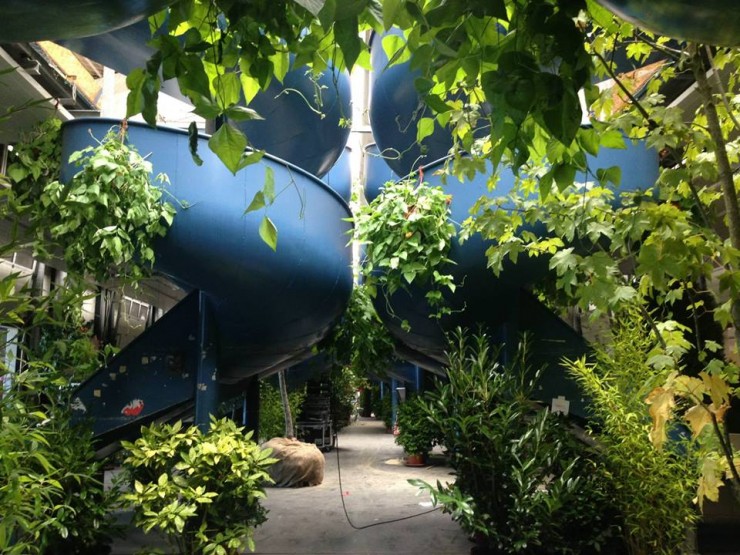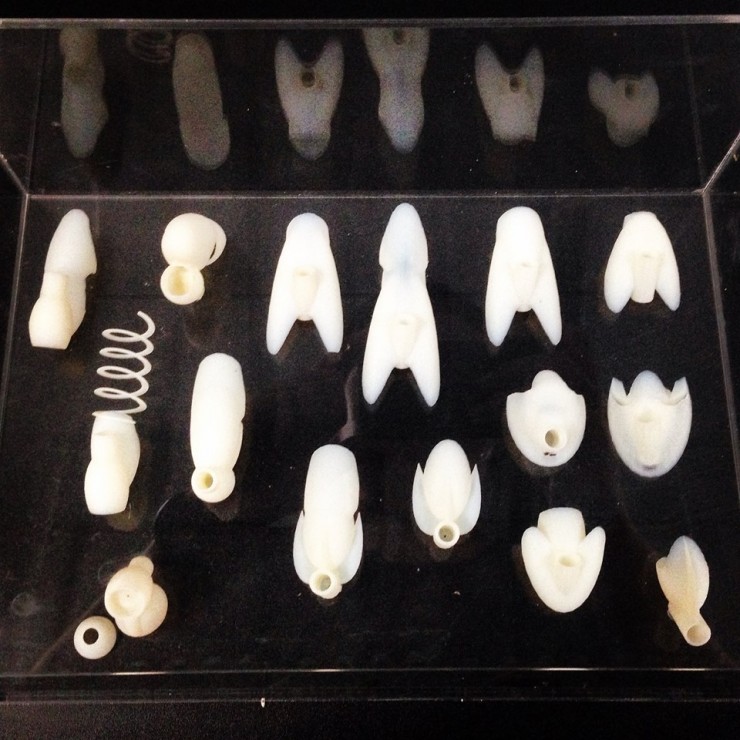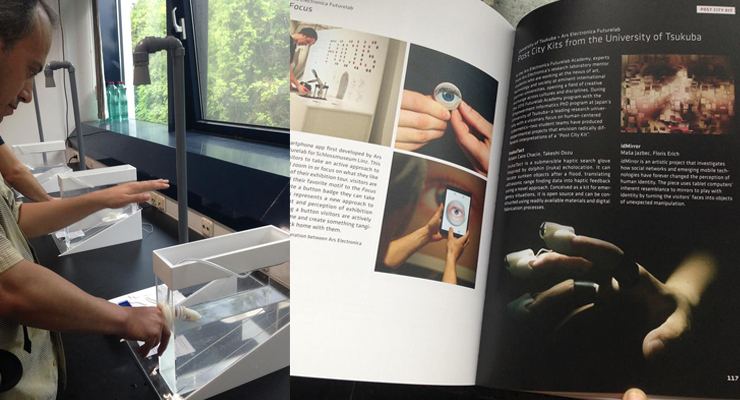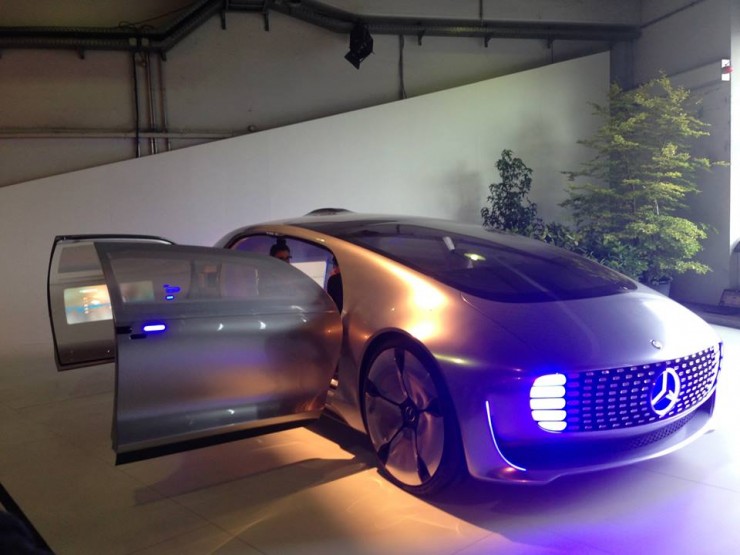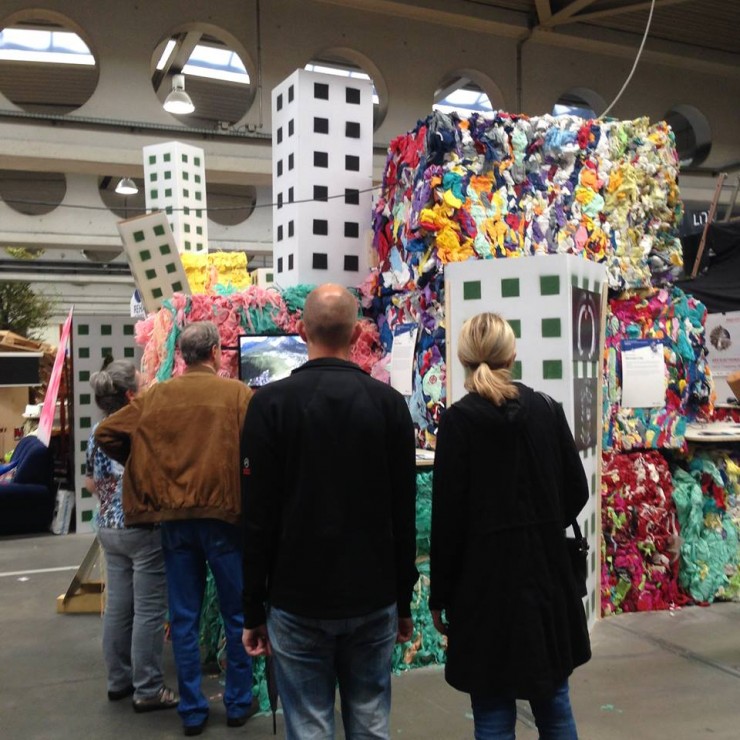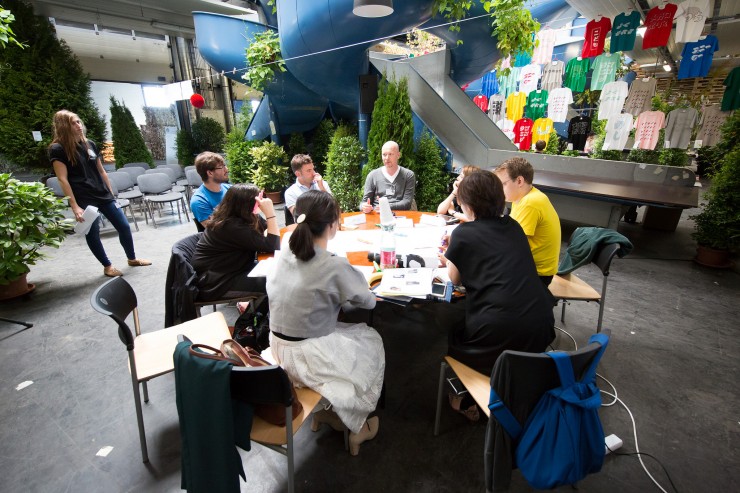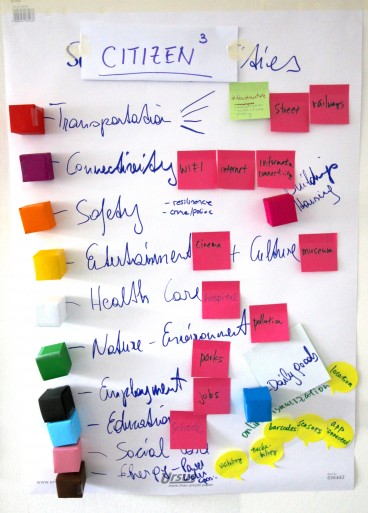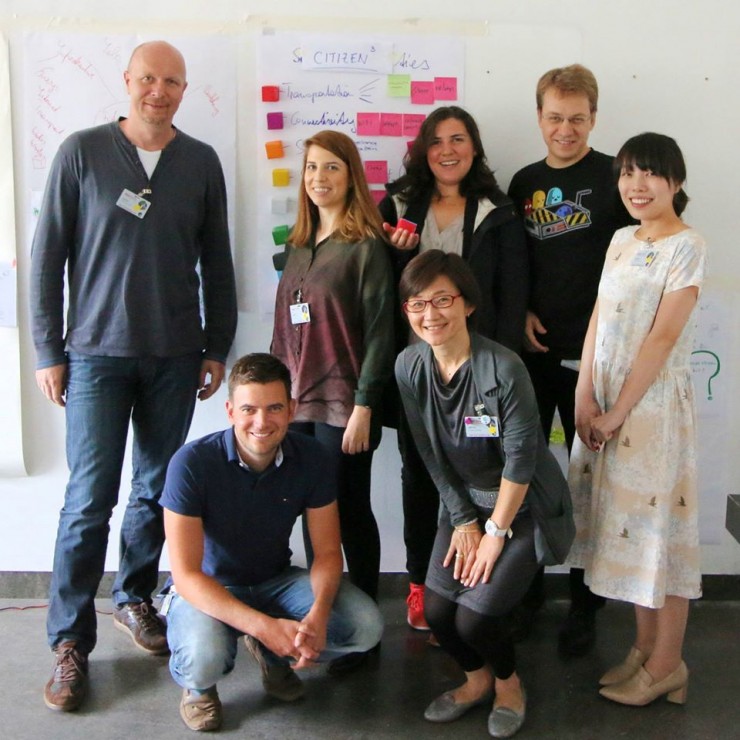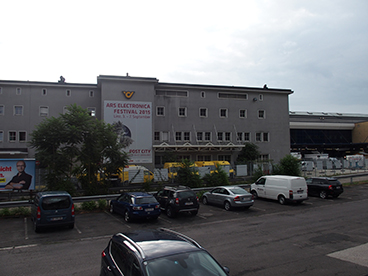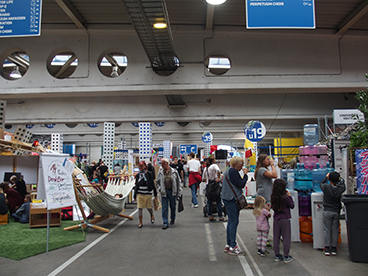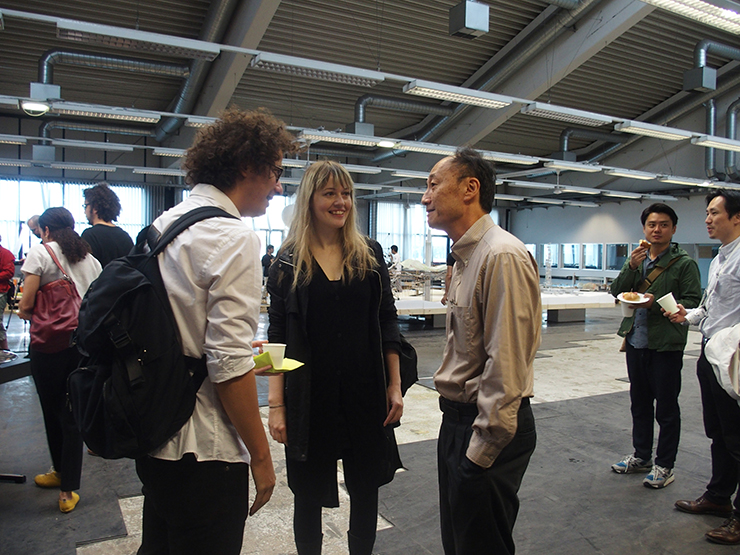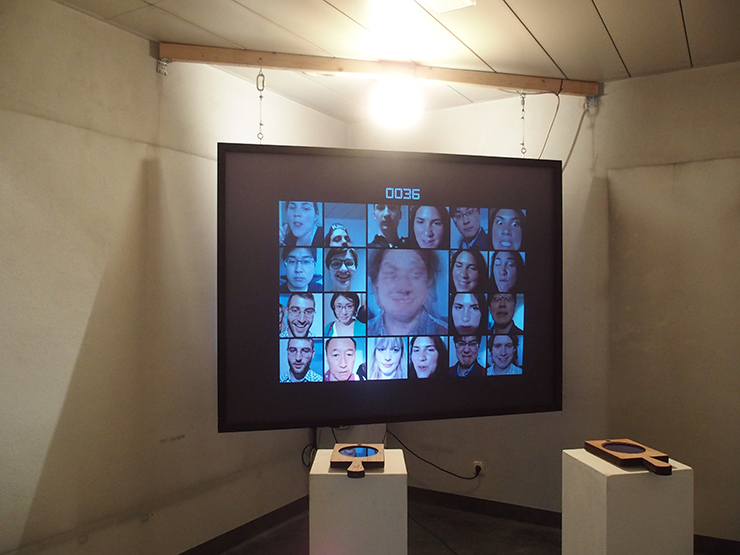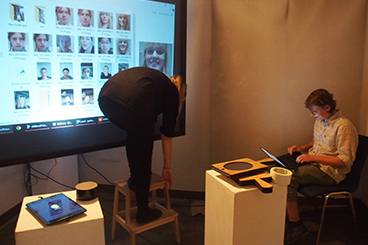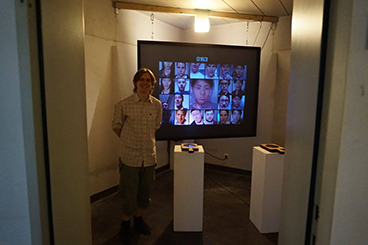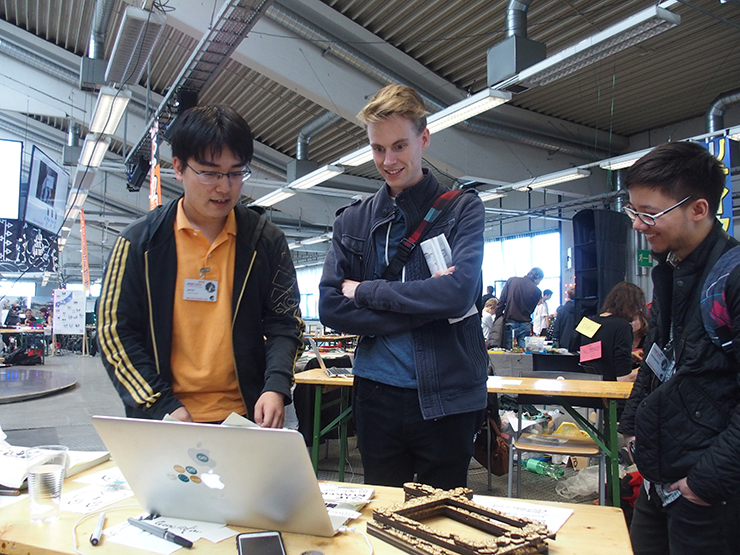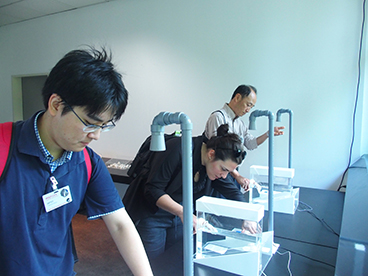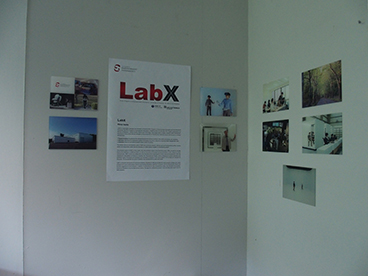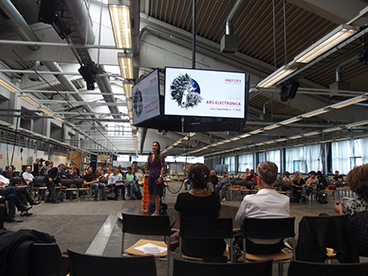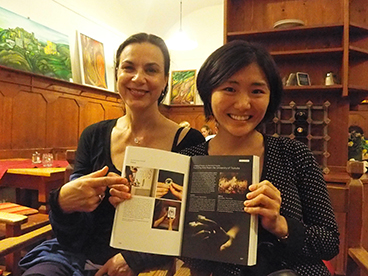Report on exhibition at Ars Electronica Festival 2015
Five students of the Ph.D. Program in Empowerment Informatics (EMP) (first-year student Takeshi Ozu, second-year student Hikaru Takatori, and third-year students Erich Floris Marc Arden, Chacin Aisen Carolina, and Jazbec Masa) exhibited at Ars Electronica Festival 2015, held September 3-7, 2015 in Linz, Austria.
In addition to exhibiting the results of each student’s research, this exhibit also featured the results of research through LabX, a joint project between a team of students formed voluntarily in the class Empowerment Informatics Project-based Research and Ars Electronica Futurelab, the section responsible for R&D in Ars Electronica Linz GmbH, a member of the Empowerment Global Alliance. In this way, it served as an opportunity to present to the world the results of diverse activities related to media art.
It also was announced that third-year student Chacin Aisen Carolina had been chosen as a member of the Future Innovators Summit, in which promising young creators chosen from applicants from around the world take part in presentations and discussions, serving as a valuable opportunity for exchange of opinions across the generations with young creators from around the world and mentors who are pioneers in media art.
The work we exhibited was Big Robot Mk1. Of the structural elements of this work, I was responsible for the exterior AR presentation components. We built Big Robot Mk1 with the aim of making it the world’s largest passenger-carrying robot. It moves forward with the passenger’s steps, with its paths of movement controlled to match those of a human form five meters tall. In this way, the passenger can get a feel for what it would be like to walk as a five-meter giant.
Big Robot was put on exhibit rather suddenly while still under development in response to a request from Hideaki Ogawa of Futurelab when he visited the Empowerment Studio in May. For this reason, the speed of its movement and the angles of articulation of its joints were restricted, and only certain parties were permitted to ride it during the demonstration. Still, it was reassuring to complete the entire program without any serious damage. While the work of packing, unpacking, assembly, and disassembly was tough because the equipment was so big, we were able to complete it without a hitch before the end of the day while enlisting the cooperation of the venue setup team. Visitors were impressed by its presence, with many commenting that they couldn’t believe something so large could move. At the same time, naturally many wanted to ride in the exhibit, showing us the importance of completing soon a demo unit that the general public can experience.
In future research activities, we would like to study how the physical change in body size when riding this device changes passengers’ bodily figures and bodily images and how that makes it fun to ride.
The Ars Electronica Festival is a large event that encompases various venues of the city of Linz in Austria. The festival consists of three parts the Prix, festival, and the Ars Electronica museum headquarters which hosts their normal exhibition, as well as some other programing that is directly related to the festival. This year’s festival venue was an old post sorting station, the building was a large warehouse with a few office rooms. The most characteristic aspect of the space was the postal sorting channels, spiral navy blue slides, almost seeming as a water park in the middle of an industrial complex. Curator, Hideaki Ogawa, who was also the Futurelab liaison for our LabX collaboration with the University of Tsukuba, created a surrealist experience. The slides were covered in hanging vines, surrounded by edible plants, and trees with their roots planted in jute sacks, making it feel as if these would be the farms of the future.
This area was called central park, and it divided one part of the exhibition in two. Behind the park one could find canvas huts and piles of rocks that housed screens attempting to allure at another kind of nomad living, the kind of living arrangements that current refugees have to live in now. The other side of the park was the Knowledge Capital, with a small stage carrying a hanging slogan in the background saying “Knowledge was invented in Osaka”. This area was surrounded by japanese artists and engineers, exhibiting robots and new interfaces for projections, such as fog and soap bubble screens. Passing through the Knowledge Capital corridor the viewers would find themselves in the Fashion District where the LabX projects were exhibited, IrukaTact in conjunction with the University of Tsukuba info area and a small room across for idMirror.
This area was called central park, and it divided one part of the exhibition in two. Behind the park one could find canvas huts and piles of rocks that housed screens attempting to allure at another kind of nomad living, the kind of living arrangements that current refugees have to live in now. The other side of the park was the Knowledge Capital, with a small stage carrying a hanging slogan in the background saying “Knowledge was invented in Osaka”. This area was surrounded by japanese artists and engineers, exhibiting robots and new interfaces for projections, such as fog and soap bubble screens. Passing through the Knowledge Capital corridor the viewers would find themselves in the Fashion District where the LabX projects were exhibited, IrukaTact in conjunction with the University of Tsukuba info area and a small room across for idMirror.
Unfortunately I was unable to stay at our exhibition to collect people’s reactions and get their feedback, but I did notice that we had some power issues making the waterjets virtually undetectable by some people. Some people did feel the varying pressure, and as for user testing purposes we realized that we needed to use the actual power source used on the glove given that they are much stronger, and more accurate for the actual purpose of testing the glove.
On another side of the warehouse where Iwata Sensei’s Big Robot was stationed there were stacks of compacted recyclables, solid cubes made of cans and scrap metal, other cubes were made of cardboard boxes, and towards the end of that large hall you could see the outline of city buildings made of cardboard cutouts. This festival had a feeling of dissonance, where some artists imagined the future to be a lost and revived postindustrial civilization, and others imagined the super slick future of technology connecting us without the need of centralization.
For example, this festival was also the place in which Mercedes Benz debuted their self-driving car, a collaboration with the Futurelab. The style of some of the robots and this vehicle were not anything like the recycled feel of the rest of the space, but this contrast made it very interesting for everyone to imagine their own Post-City future.
The Future Innovators Summit was a collection of experts selected by Hideaki Ogawa and the Japanese advertising firm Hakuhodo, a new collaboration called Future Catalysts. The summit was divided into various teams that had to discuss specific topics and create a “Post-City Kit”.
Teams met for an intensive four days of discussions and brainstorming sessions facilitated bythe experts of Hakuhodo. Our team was lead by Kyoko Someya, comprised of Lars Lütze (DE) a Development Engineer at Daimler AG and supports the management in the topic of User Interaction & Security; Hagar Elazari (IL) is an artist, a designer and an engineer. She designs Interactive light art; Adrian Dabrowski (AT) is PhD candidate at the University of Technology in Vienna and employed as researcher at SBA Research; Karl Pletschko (AT) is founder and CEO of Mopius. Mopius released the first version of the Nearspeak Software Development Kits (SDK); and me.
Our theme was “Future Citizens” and our main question was: “How smart does a city have to be before we are afraid of living in it?” This was a very difficult question because firstly we had to agree on the terms that were used; what is a smart city? And what can make us afraid of living in a city? These questions made us debate for hours, in trying to understand each other and hoping to come up with a consensus that would set us in the right direction to begin designing our kit. Our group mentor Hiroshi Ishii (JP/US) who is a Jerome B. Wiesner Professor of Media Arts and Sciences at the MIT Media Lab, came to inspect our progress and to guide our thinking. He also had trouble with our question, and thankfully had similar views to my own as far as the term “smart”. He thought that it was a bad question, and that the term smart doesn’t mean anything. It is not a very solid concept, and that we should design a kit that would allow a civilization to jumpstart after a catastrophic event occurred. After his guidance we went back to the drawing board and began rethinking what does a kit for a Future Citizen have to be. The afternoon came close to an end and our group did not have a clear idea yet, so we set out to meet again the next day.
The next day Karl came up with an idea about cubes that would allow citizens to allocate public funds onto issues that they thought were the most important. Each citizen would have an allocation of cubes and move them between public services depending on their ideal distribution. Finally our team decided to go with this idea, but we created a hybrid execution for it. One recurring theme was how to gather people in the city when we are all so enthralled on our computers and virtual social groups. No one agreed that we should become more virtual in the future, but rather regroup the physicality of social contact. Plazas, as public areas for gathering were an inspiration for our cubes project. A participatory installation in the city center would allow people to vote with colored cubes, each color would represent a particular service, and their opinion on public spending could be visualized and altered by their own citizens in real-time. This gathering place would also serve as a catalyst that would spark conversations and discussions, as you could see someone voting for better transportation, or better healthcare, and perhaps have a similar view to your own, or one completely different. This project also had a virtual layer, where people could contribute via their mobile devices and tag areas in the city that needed specific care. Our project was named Citizen3 , Citizen-Centric City, “The building blocks for an engaged future society.” On the last day of the summit each team had presentations of their kits and you can find ours here: http://bit.ly/arscube
Here are some images of the summit: https://www.flickr.com/photos/arselectronica/sets/72157657723639458
Between the 3rd and 7th of September 2015 we participated at the Ars Electronica festival in Linz, Austria. Post City was the festival topic of this year. The festival was located at the former main building of the Austrian Post Office. I have to say that I was really impressed by its infrastructure. The festival topic and projects totally fitted into that location.
In the early May we started a LabX project; an academy project with the Ars Electronica Futurelab. The project included lectures of Mr. Hideaki Ogawa and Mr. Horst Hoertner from Futurelab and many meetings with project-development discussions with Mr. Peter Horst and Mr. Hideaki Ogawa. Project-development process was rather fruitful. Together with Mr. Floris Erich from Artificial Intelligence laboratory we created the idMirror project. In August our projects were finished, ready to be shown and demonstrated at the Ars Electronica festival 2015. The projects that we had created were part of the Post City Kit exhibition.
On the 3rd of September we installed the idMirror project in a small room at the Post City venue. The room was just perfect for the idMirror project requirements. We were able to show it in its fullness. In the five days of the festival there were many visitors who tried and experienced the idMirror installation; actually a lot more than we had expected. We received quite diverse responses from the visitors. For some it was a very playful experience and for the others a very thoughtful one. During the exhibition demonstrations we managed to collect a lot of data (images) of the visitors and got inspired to continue to work and research on the idMirror project.
In addition to all the interesting festival program components, I would like to emphasize the importance of the exchange of contacts with other institutions and art curators for further collaborations.
Last but not least, the whole Ars Electronica experience was very inspiring.
Related URL
ARS ELECTRONICA FESTIVAL 2015:
http://www.aec.at/postcity/en/
ARS ELECTRONICA FUTURELAB:
http://www.aec.at/futurelab/en/referenzen/alle-jahre/2015/tsukuba2015/
Aisen Caro Chacin’s homepage (IrukaTact page):
http://www.aisencaro.com/iruka.html
Masa JAZBEC’s homepage (idMirror page):
http://www.masajazbec.si/?p=408


